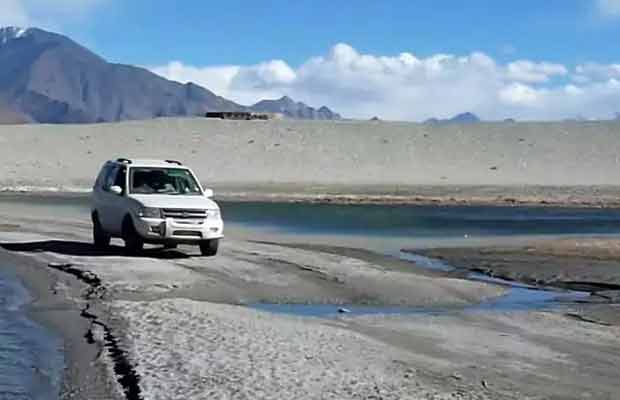
Embarking on a journey from Manali to Leh isn’t just a route from one place to another; it’s a transitional experience, a passage through some of the most dramatic landscapes on earth. The road journey is a surreal 490 km drive through the heart of the Himalayas, offering travellers an unmatched experience. Best undertaken between June and September, this route boasts significant landmarks like Rohtang Pass, Keylong, Jispa, Baralacha La, Sarchu, and Tanglang La. While the scenic vistas are breathtaking, acclimatization is important to counter the thinning air.
The Manali to Leh Tour is the epitome of nature’s majesty but demands respect and preparedness. This travel guide will illuminate the key facets of this epic voyage, ensuring that travellers are well-prepared and well-informed.
Historical and Geographic Overview –
The Manali – Leh highway stretches for approximately 490 km, carving its way through the majestic Himalayan range. Originally a trade route, today, it serves as a crucial road for the Indian military as well as a paradise for road trip enthusiasts. The 490 km long Manali - Leh highway meanders around the spine of the Himalayan range and serves as a monument to human achievement during nature's magnificence.
This historic route is rife with legends of traders, pilgrims, and adventurers who formerly travelled its difficult paths carrying goods and dreams. From the verdant slopes of Manali to the desolate landscapes of Leh, they travelled, fostering a special fusion of cultures, traditions, and economics that are still present in the daily lives of the inhabitants.
Best time to plan Manali to Leh Trip –
The best season to embark on this road journey is between June and September. During these months, the snow gets almost cleared, and the roads are relatively safer. Besides this, the highway is typically closed due to heavy snowfall and potential avalanches.
What to Pack for Trip?
Considering the climatic conditions of Manali and Leh taxi service, the challenging terrains, and unpredictable weather, it’s important to be adequately prepared with proper luggage –
Warm clothing – Even during summers, temperatures can plummet.
Medications – Especially for altitude sickness.
Sunscreen and Sunglasses – The sun can be surprisingly harsh at this altitude.
Water and snacks – While there are a lot of eateries on the way, having supplies in handy is always a good idea.
Emergency Kit – Including a first-aid box, flashlight, and necessary tools is highly important.
Camping Gear – If in case you plan to camp along the way, this will be needful.
Major Tourist Stops and Attractions –
Rohtang Pass – Located at 13050 ft., it’s a gateway to the Lahaul and Spiti Valleys. The views here are mesmerizing, but by way of the crowd, especially during peak season.
Keylong – The administrative center of the Lahaul and Spiti district offers a mix of green landscapes and barren mountains. It’s a great place for an overnight halt.
Jispa – A small village that offers a tranquil experience by the Bhaga River. It’s a recommended stop for acclimatization.
Baralacha La – At 16040 ft., this high mountain pass connects Lahaul to Ladakh. The panoramic views here are breathtaking, with snow-capped peaks all around.
Sarchu – Acting as the border between Himachal Pradesh and Ladakh, it’s a popular camping site.
Tanglang La – At 17,480 ft., it’s among the world’s highest motorable passes. The descent from here leads you into the Leh valley.
Safety and Acclimatization –
One cannot emphasize enough the importance of acclimatization. As you ascend, the oxygen levels drop, which might lead to Acute Mountain Sickness (AMS). Symptoms like dizziness, nausea, and headaches. Spending a night in places like Jispa or Keylong can help in acclimatization. It’s always advisable to keep medicines like Diamox handy.
Permits –
For certain areas like Nubra Valley or Pangong Lake (off the Manali – Leh highways but popular extensions of the trip), you’d require an Inner Line Permit (ILP). Ensure you get all the necessary permits beforehand.
Sustainability –
The influx of tourists has undoubtedly led to increased litter and ecological damage. It’s important to:
1. Carry reusable water bottles.
2. Refrain from littering.
3. Respect the local customs and traditions.
Wrapping up –
A road journey from Manali to Leh Tour Package is a testament to nature’s grandeur, taking one through a roller-coaster of terrains, from lush meadows to desolate landscapes. It’s a spiritual and visual treat but demands respect, both for the local ecosystem and the challenges the road presents. Be ready, be responsible, and immerse in what’s undoubtedly one of the greatest road trips globally